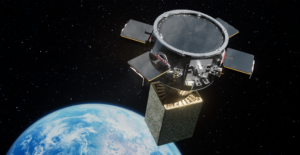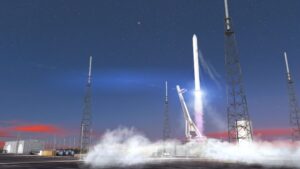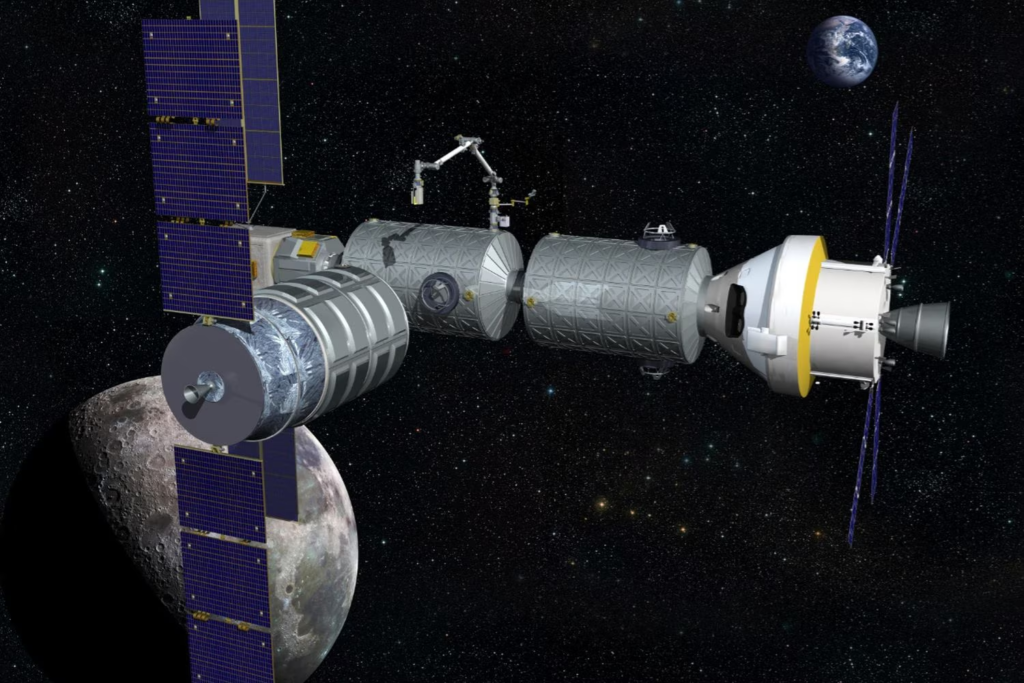
How NASA & Its Partners Plan To Construct Gateway
With Artemis I complete and work on the next few Artemis missions underway, the lunar space station named Gateway is closing in on various deadlines. The station is a massive project being worked on not only by NASA but a few other valuable patterns such as ESA, JAXA, and the CSA. Together they are trying to create the first significant infrastructure surrounding the Moon.
When finished Gateway is expected to have tens of different modules creating a very large station. This being said, Gateway will take a lot of time before it’s finished and will start with only a few modules. In this case, NASA and its partners have a specific plan for the initial station and how it will evolve and adapt over time to facilitate a sustained human presence on the Moon.
In the last couple of months, we have seen more progress on this station as physical modules begin to take shape. With an initial launch date scheduled not long from now in 2024, the race is on to complete and launch the first segments. Here I will go more in-depth into what segments will launch first, what each agency is contributing, what to expect in the future, and more.
The First Station Modules
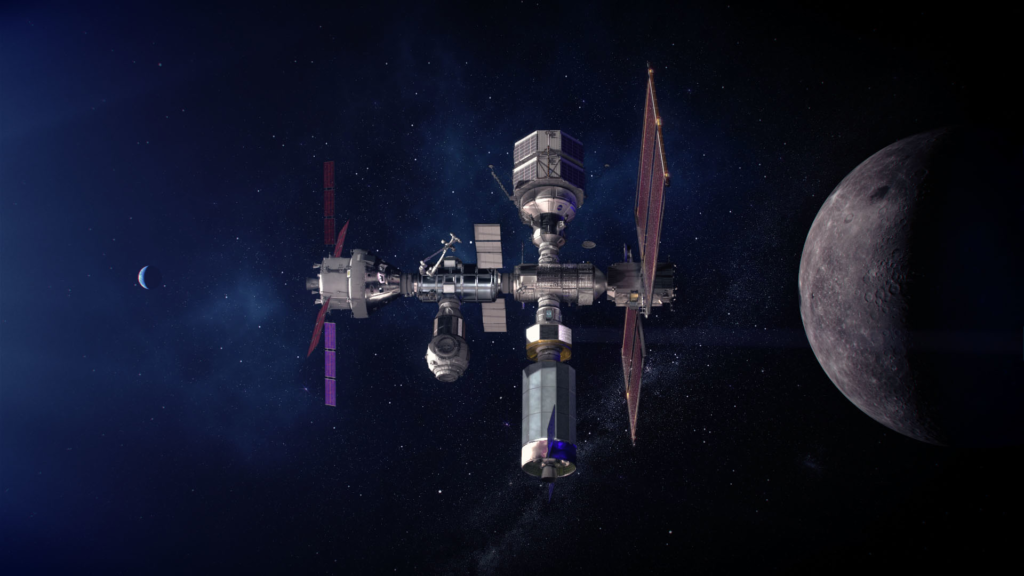
Earlier this month, NASA tweeted saying, “Around the Moon, Gateway’s capabilities to support longer-duration @NASAArtemis missions will expand with the addition of elements provided by @CSA_asc, @ESA, and @JAXA_en. This group makes up the team trying to create invaluable Moon infrastructure. Specifically, based at NASA’s Johnson Space Center in Houston, Texas, the Gateway Program is building a small, human-tended space station orbiting the Moon that will provide extensive capabilities to support NASA’s Artemis campaign. Built with international and commercial partnerships, Gateway’s capabilities for supporting sustained exploration and research in deep space include docking ports for a variety of visiting spacecraft, space for crew to live and work, and on-board science investigations to study heliophysics, human health, and life sciences, among other areas. Gateway will be a critical platform for developing technology and capabilities to support Moon and Mars exploration in the coming years.
Gateway will be humanity’s first space station in lunar orbit to support NASA’s deep space exploration plans, along with the Space Launch System (SLS) rocket, Orion spacecraft, and the Human Landing System (HLS) that will send astronauts to the Moon. Since it’s not realistic to create and launch the entire station with all of its segments at once, NASA has focused Gateway development on the first two elements of the station. This includes the Power and Propulsion Element (PPE) and the Habitation and Logistics Outpost (HALO) – which will launch together on SpaceX’s Falcon Heavy launch vehicle.
As astronauts live and work on Gateway to enable sustained exploration and research in deep space, their efforts will be made possible by the Power and Propulsion Element (PPE). A foundational component of the lunar outpost and the most powerful solar electric spacecraft ever flown, PPE will provide Gateway with power and allow it to maintain its unique orbit around the Moon. PPE will generate 60kW of electrical power, which will power Gateway’s subsystems and its solar electric propulsion (SEP) system to keep the station in orbit around the Moon. PPE leverages technology advancements from past successful electric propulsion missions – such as the recent DART mission – to help NASA push the boundaries of what’s possible in deep space. PPE’s SEP system provides greater fuel economy, enabling lower-cost missions that can carry more cargo. This is because the spacecraft’s propellent mass can be reduced up to 90% by being augmented with energy from the Sun.
Once deployed, the segment’s two large, yoga-mat-like roll-out solar arrays – which are approximately the size of a football field’s endzone – will generate power to ionize and accelerate Xenon gas, using a tenth of the propellant required by conventional chemical propulsion systems. As the powerhouse of Gateway, the PPE will provide capabilities for high-rate communications between the station, the lunar surface, and Earth.
In addition, HALO is where astronauts will live and conduct research while visiting Gateway. The pressurized living quarters will provide command and control systems for the lunar outpost, and docking ports for visiting spacecraft, such as NASA’s Orion spacecraft, lunar landers, and logistics resupply craft. The HALO module will serve as the backbone for command and control and power distribution across Gateway and will perform other core functions, including hosting science investigations via internal and external payload accommodations, and communicating with lunar surface expeditions. HALO also will enable the aggregation of additional habitable elements to expand Gateway capabilities, leveraging contributions from Gateway’s international partners. Batteries provided by the Japan Aerospace Exploration Agency (JAXA) will power HALO until PPE solar arrays can be deployed and during eclipse periods. Robotic interfaces provided by the Canadian Space Agency will host payloads and provide base points for Canadarm3 robotic operations. ESA (European Space Agency) will provide a lunar communications system to enable high-data-rate communications between the lunar surface and Gateway. Together these two segments will create the start of the first lunar space station.
In February 2021, NASA selected SpaceX to provide launch services for the integrated PPE and HALO spacecraft. After integration on Earth, PPE and HALO are targeted to launch together no earlier than November 2024 on a Falcon Heavy rocket from Launch Complex 39A at Kennedy.
Gateway
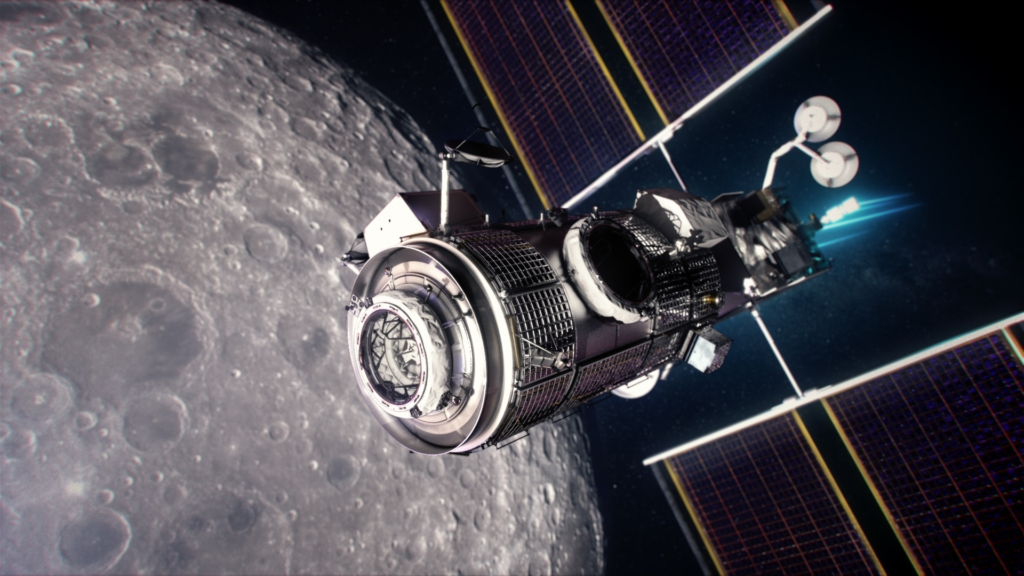
Now that we know more about the two initial segments being launched, we can take a closer look at the rest of the station and what each partner is working on. As astronauts prepare for missions to the lunar surface, they will need deliveries of critical pressurized and unpressurized cargo, science experiments, and supplies like sample collection materials. In March 2020, NASA announced SpaceX as the first U.S. commercial provider under the Gateway Logistics Services contract to deliver cargo and other supplies to Gateway. One logistics services delivery is anticipated for each crewed Artemis mission to Gateway.
Gateway will provide unique options for Earth science, heliophysics, lunar and planetary sciences, life sciences, astrophysics, and fundamental physics investigations by allowing extended views of the Earth, Sun, Moon, and space not possible from Earth’s surface or from Earth orbit. The first three science instruments for Gateway have already been selected. Two of them, the Heliophysics Environmental and Radiation Measurement Experiment Suite (HERMES) and the European Radiation Sensors Array (ERSA), will fly outside Gateway to monitor the Sun’s radiation environment and space weather. HERMES, led by NASA’s Goddard Space Flight Center, will monitor lower energy solar particles critical to scientific investigations of the Sun including the solar winds. ERSA, led by ESA, will monitor radiation at higher energies with a focus on space weather. The Internal Dosimeter Array (IDA) will fly inside the HALO to allow for the study of radiation shielding effects and improve radiation physics models for cancer, cardiovascular, and central nervous system effects, helping assess crew risk on exploration missions. IDA is being built by ESA, with additional science instruments from JAXA.
ESA is a big contributor to this project. In October 2020, ESA signed an agreement with NASA to contribute habitation and refueling modules, enhanced lunar communications to the Gateway, and two more Orion Service Modules. The ESA-provided International Habitation module, I-HAB, will enhance Gateway capabilities for scientific research, life support systems, and crew living quarters. These capabilities enable longer duration crewed Gateway missions. The European refueling module will also include crew observation windows. Also, the enhanced lunar communications module will be integrated with the Habitation and Logistics Outpost (HALO) module pre-launch and provide high-rate communications relay between Gateway and elements on the lunar surface.
In addition, in December 2020, Canada signed an agreement with NASA to participate in Gateway and provide advanced external robotics. The CSA-provided external robotics system includes a next-generation robotic arm, Canadarm3, for Gateway. Canadarm3 will move end-over-end to reach many parts of Gateway’s exterior, where its anchoring “hand” will plug into specially designed interfaces. CSA also will provide robotic interfaces for Gateway modules, which will enable payload installation including that of the first two scientific instruments launching on the inaugural Gateway elements.
Lastly, in December 2020, Japan finalized an agreement with NASA to provide several capabilities for Gateway’s I-HAB, which will provide the heart of Gateway life support capabilities and additional space where crew will live, work, and conduct research during Artemis missions. JAXA’s planned contributions include I-HAB’s environmental control and life support system, batteries, thermal control, and imagery components, which will be integrated into the module by ESA prior to launch. These capabilities are critical for sustained Gateway operations during crewed and uncrewed time periods.
Conclusion
Gateway is a very ambitious project that involves a lot of moving parts. This being said, the agency and its partners have a set plan and are working toward an initial launch of two segments in 2024. From here it will continue to grow and support humans exploration of the Moon. We will have to wait and see how it progresses and the impact it has on the space industry.

